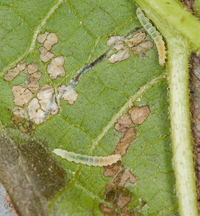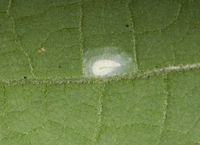
| Recorded by: Jim Petranka and Becky Elkin on 2025-10-06
Madison Co.
Comment: | 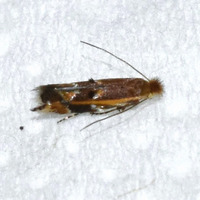
| Recorded by: Jeff Niznik on 2025-04-06
Orange Co.
Comment: |
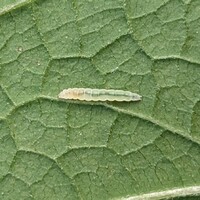
| Recorded by: Jeff Niznik on 2024-11-05
Orange Co.
Comment: | 
| Recorded by: Mark Basinger on 2024-10-16
Rowan Co.
Comment: Mines were unoccupied. |
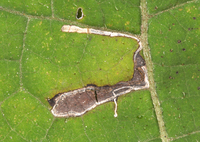
| Recorded by: Jim Petranka, Mark Basinger and Becky Elkin on 2024-09-20
Madison Co.
Comment: Unoccupied mines were on Smallanthus uvedalia. | 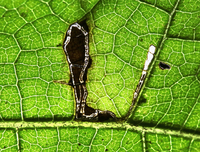
| Recorded by: Jim Petranka, Mark Basinger and Becky Elkin on 2024-09-20
Madison Co.
Comment: |
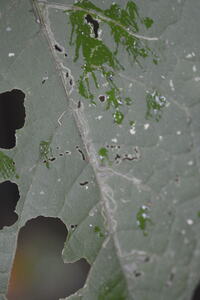
| Recorded by: Tracy Feldman on 2024-07-25
Chatham Co.
Comment: | 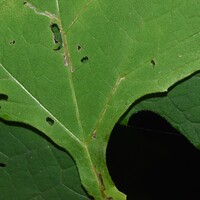
| Recorded by: Jeff Niznik on 2024-07-24
Orange Co.
Comment: |

| Recorded by: Jeff Niznik on 2023-09-20
Orange Co.
Comment: | 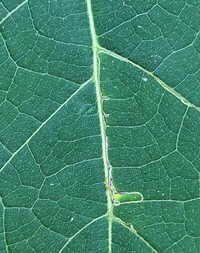
| Recorded by: Jeff Niznik on 2023-09-20
Orange Co.
Comment: |

| Recorded by: Jim Petranka, Bo Sullivan and Becky Elkin on 2023-09-15
Macon Co.
Comment: A pupation cocoon on Smallanthus. | 
| Recorded by: Tracy Feldman on 2023-08-28
Wake Co.
Comment: |

| Recorded by: Tracy Feldman on 2023-08-28
Wake Co.
Comment: | 
| Recorded by: Tracy Feldman on 2023-08-28
Wake Co.
Comment: |

| Recorded by: Jim Petranka and Becky Elkin on 2023-08-16
Macon Co.
Comment: A pupation cocoon on Smallanthus. | 
| Recorded by: Jim Petranka and Becky Elkin on 2023-08-16
Macon Co.
Comment: A molting cocoon on Smallanthus. |

| Recorded by: Jim Petranka, Becky Elkin and Bo Sullivan on 2023-08-09
Ashe Co.
Comment: | 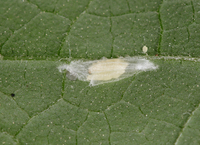
| Recorded by: Jim Petranka, Becky Elkin and Bo Sullivan on 2023-08-09
Ashe Co.
Comment: A molting cocoon on Smallanthus. |
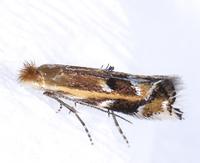
| Recorded by: John Petranka on 2023-06-30
Orange Co.
Comment: A reared adult from a cocoon found on Smallanthus uvedalia; cocoon on 06/30/2023; adult emerged on 7/7/2023. | 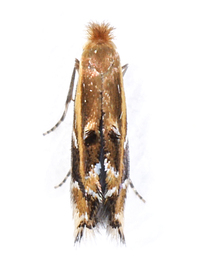
| Recorded by: John Petranka on 2023-06-30
Orange Co.
Comment: A reared adult from a cocoon found on Smallanthus uvedalia; cocoon on 06/30/2023; adult emerged on 7/7/2023. |

| Recorded by: John Petranka on 2023-06-30
Orange Co.
Comment: A reared adult from a cocoon found on Smallanthus uvedalia; cocoon on 06/30/2023; adult emerged on 7/7/2023. | 
| Recorded by: John Petranka on 2023-06-30
Orange Co.
Comment: The cocoon was found on 06/30/2023 attached to a Smallanthus uvedalia leaf along its midrib near the base. Eclosion occurred a week later on 7/7/2023. |

| Recorded by: John Petranka on 2022-11-02
Orange Co.
Comment: An unoccupied mine on Smallanthus uvedalia. | 
| Recorded by: John Petranka on 2022-11-02
Orange Co.
Comment: An externally feeding larva on Smallanthus uvedalia. |
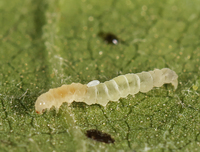
| Recorded by: John Petranka on 2022-11-02
Orange Co.
Comment: | 
| Recorded by: John Petranka on 2022-10-29
Durham Co.
Comment: |
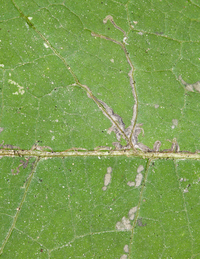
| Recorded by: Jim Petranka and Becky Elkin on 2022-10-24
McDowell Co.
Comment: An unoccupied mine on Smallanthus. | 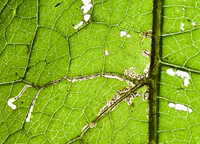
| Recorded by: Jim Petranka and Becky Elkin on 2022-10-24
McDowell Co.
Comment: Backlit image of an unoccupied mine on Smallanthus. |
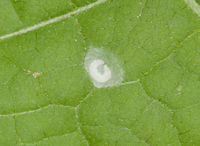
| Recorded by: Jim Petranka and Becky Elkin on 2022-10-24
McDowell Co.
Comment: A larva in a molting cocoon on Smallanthus. | 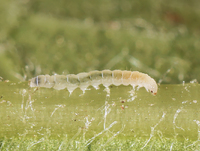
| Recorded by: John Petranka on 2022-10-15
Orange Co.
Comment: |
|

 »
»


